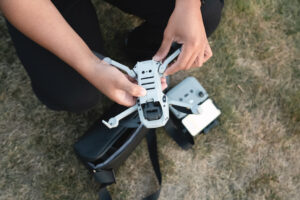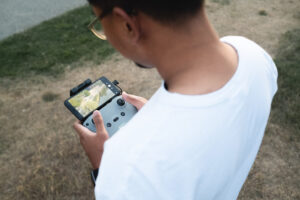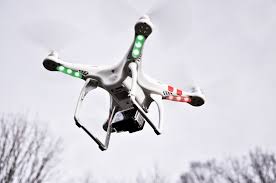Key Takeaways
Understand the essential gear needed for MultiGP drone racing to start off on the right foot.
Learn how to properly set up your racing drone to ensure peak performance.
Discover the importance of pre-flight preparations for a trouble-free racing experience.
Grasp the value of practice on simulators and in real-world settings to sharpen your racing skills.
Get familiar with race day routines and post-race analysis to continuously improve your performance.
To prepare for a MultiGP drone racing event
1. Practice: Familiarize yourself with the controls by practicing in an open area before attending a race. This will help you become comfortable maneuvering your drone around obstacles.
2. Join Online Communities: Connect with other drone racers by joining online communities such as the Drone Racing League or MultiGP. These communities are great resources for learning more about the sport, sharing tips and tricks, and staying up-to-date on the latest news.
3. Attend Local Events or Races: Participating in local events or races is a great way to gain experience and hone your skills. Most local events are open to all skill levels, so don’t be afraid to jump right in!
4. Pre-Flight Preparation: Before attending a race, ensure that your drone is in good working order. Inspect your charger and balance charging board for physical damage, verify that your charger is fully charging and balancing batteries, and bring necessary tools such as a hex driver set, pliers, prop wrench, screwdrivers, knife, and a portable soldering iron.
5. Gear Checklist: Bring all necessary gear, including spare parts for all of your drones, extra batteries, a battery checker, and tools for making configuration changes in Betaflight if needed.
6. Stay Updated: Check back often for updates on the best techniques and drills from top pilots in the sport.
7. Follow Safety Guidelines: When participating in drone racing, it is essential to follow all safety guidelines when operating your drone and wear protective gear such as goggles and helmets. Additionally, be sure to obey all local laws and regulations regarding the use of drones as it may vary from place to place.
By following these steps, you can ensure that you are well-prepared for a MultiGP drone racing event and can enjoy the thrill of drone racing while staying safe at the same time.
Gearing Up for Victory: MultiGP Drone Racing Essentials
When you’re about to dive into the adrenaline-pumping world of MultiGP drone racing, the first thing you need is the right gear. But with so many options out there, it can be overwhelming to figure out what you truly need to cross that finish line first. Let’s break it down into a simple checklist, so you can gear up without the guesswork.
The Ultimate Drone Racing Gear Checklist
Before you even think about taking off, you’ve got to be sure you’ve got all the essentials packed and ready to go. Here’s what you’ll need:
A racing drone – choose one that’s agile and built for speed.
FPV (First Person View) goggles – for that immersive in-flight experience.
Reliable radio transmitter – your direct line to your drone’s controls.
High-capacity batteries – because running out of juice mid-race isn’t an option.
A battery charger – to keep those batteries topped up and race-ready.
Propellers – bring spares, because accidents happen.
Tools for repairs – a small kit can save your race day.
Video receiver – if you’re serious about getting every competitive edge.
Remember, the right gear can make or break your race. Invest wisely and always have backups for the critical components.
Setting Up Your Racing Machine
Now that you’ve got your gear, it’s time to set up your drone for the race. This isn’t just about plugging in a battery and hitting the throttle; it’s about fine-tuning your machine to respond to your every command with lightning-fast precision.
First things first, check and double-check your drone’s components. Ensure that your motors are free of debris, your propellers are securely fastened, and your battery is properly connected. Then, it’s onto the settings. You’ll want to adjust your drone’s PID (Proportional, Integral, Derivative) settings, which control the responsiveness of your drone to your controls. Getting these right is like finding the sweet spot in a race car’s suspension—it’s what separates the pros from the amateurs.
Here’s a quick rundown on setting up your drone racing gear:
Inspect your drone thoroughly for any loose parts or damage.
Calibrate your ESCs (Electronic Speed Controllers) to ensure smooth motor operation.
Tune your PIDs for stable and responsive flight characteristics.
Bind your radio transmitter to your drone to ensure a secure connection.
Test fly in a safe area to get a feel for your drone’s handling and make any necessary adjustments.
It’s all about the details here. Take your time and get to know your machine inside and out.
Pre-flight Preparations: Ensuring a Smooth Takeoff
Before you line up at the starting grid, you need to run through your pre-flight checklist. This isn’t just about being cautious; it’s about being ready to compete at the highest level. A well-prepared pilot is a confident pilot, and confidence leads to victory.
Start with your batteries. Check their charge levels and ensure you’ve got enough power for practice runs and the main event. Then, look over your propellers for any nicks or cracks that could cause instability in flight. Once you’ve got the all-clear, it’s time to strap on your FPV goggles and get a clear view of what your drone sees. Adjust the focus and check for any interference. With clear vision and a fully charged drone, you’re almost ready to take to the skies.
But first, here’s your pre-flight checklist:
Fully charge all batteries and have spares ready.
Inspect propellers for damage and replace if necessary.
Ensure your FPV goggles are adjusted for a clear and sharp image.
Check for any firmware updates for your drone and transmitter.
Perform a range check to verify your transmitter’s signal strength.
These steps are crucial for a problem-free race. Skipping them isn’t worth the risk.
Practice Makes Perfect: Honing Your Skills
Alright, you’ve got your gear sorted and your drone dialed in, but don’t think you’re ready to race just yet. Like any sport, practice is key. And in drone racing, there are two main ways to practice: simulators and field trials. Both are crucial to getting you race-ready, so let’s dive into how you can make the most of them.
Simulator Training: From Virtual to Reality
Simulators are a game-changer for drone pilots. They let you fly without the risk of crashing your physical drone, which means you can practice maneuvers and racing techniques to your heart’s content. Look for a simulator that closely mimics the physics of real-world flying. Here’s how to use simulators effectively:
Pick a simulator that has tracks similar to those you’ll race on in real life.
Use the same controller you fly with to build muscle memory.
Set aside regular time to practice on the simulator, just like you would for any other sport.
Remember, the goal here is to translate your virtual skills to the real world. The more you practice in the simulator, the better you’ll handle your drone when it counts.
Field Trials: Applying Skills in the Real World
Simulators are great, but nothing beats the real thing. Field trials are where you’ll apply what you’ve learned in the simulator to your actual drone. Find a safe, open area to fly, set up some gates or markers to simulate a race track, and get flying. Pay attention to how your drone responds to your inputs and adjust your flying style accordingly. And most importantly, have fun with it. This is what drone racing is all about!
Here’s how to make the most of your field trials:
Replicate race conditions as closely as possible.
Record your flights to review your performance and identify areas for improvement.
Practice with friends or local pilots to simulate racing pressure.
Field trials are not just about logging flight hours; they’re about deliberate practice and continuous learning.

Race Day Routines: Peak Performance Strategies
It’s race day, and the excitement is palpable. But with excitement can come nerves, and that’s where having a solid routine comes into play. A good routine can calm those nerves and get you into the zone. Here’s what you should do:
Arrive early to get a lay of the land and walk the track.
Check over your gear one last time to ensure everything is in working order.
Do a couple of practice flights to get used to the day’s conditions.
Stay hydrated and eat well to keep your energy levels up.
Visualize your races, going through each gate and turn in your mind.
These steps help you focus on what you need to do: fly fast and win.
Mental Focus Techniques for Competitive Edge
Drone racing isn’t just a test of skill; it’s a test of mental strength. The best pilots know how to stay calm under pressure and maintain focus throughout the race. Techniques like deep breathing, visualization, and positive self-talk can make a huge difference. Practice these techniques regularly, and they’ll become second nature when you need them most.
Final Checkups: A Pre-Race Walkthrough
Before you get to the starting line, do a final walkthrough of your gear. Check your propellers, ensure your batteries are fully charged, and make sure your video feed is clear. It’s also a good idea to have a brief chat with your fellow racers to discuss any rules or concerns. Clear communication can prevent mishaps during the race.

Crossing the Finish Line: Post-Race Analysis
Whether you’ve won, placed, or just finished, every race is an opportunity to learn. Take the time to analyze your performance. What went well? What could you have done better? This is how you’ll improve for the next race.
Reviewing Flight Footage for Improvement
One of the best tools for improvement is reviewing your flight footage. You can see exactly what you did during the race and identify any mistakes or areas for improvement. Look at your lines through the course, your cornering, and how you handled the pressure of racing. Use this information to adjust your practice routine and come back even stronger for the next event.
With these strategies and a little bit of grit, you’re well on your way to becoming a top contender in the MultiGP drone racing scene. Remember, every pilot started somewhere, and with the right preparation and mindset, there’s no limit to how far you can go. So charge up those batteries, strap on your goggles, and get ready to race. The sky’s the limit!
FAQs
Now, let’s tackle some frequently asked questions that might be buzzing through your mind as you get ready to dive into the world of MultiGP drone racing.
How Do You Choose the Right Drone for MultiGP Racing?
Choosing the right drone is like picking the right race car; it has to fit the track and your driving style. For MultiGP racing, look for drones that are agile, lightweight, and built for speed. You’ll want a drone that can handle tight turns and accelerate quickly. Check the MultiGP class requirements for the event you’re entering, as this will often dictate the size and type of drone you can race with.
Here are some quick tips:
Check the specifications for the race class you’re interested in.
Seek out drones known for their durability and repairability.
Ask experienced racers or visit forums for recommendations.
What Are the Best Batteries for Drone Racing?
The best batteries for drone racing are the ones that give you the perfect balance of power and weight. Look for high-capacity LiPo (Lithium Polymer) batteries with a high discharge rate, which will give you the burst of power needed for quick acceleration. Always choose batteries from reputable brands to ensure quality and reliability.
Can You Use Any FPV Goggles for MultiGP Events?
While you can use a variety of FPV goggles for MultiGP events, it’s crucial to have a pair that provides a clear, reliable video feed without lag. Some races may have specific requirements regarding video frequency and channel usage, so make sure your goggles are compatible with these regulations. High-quality goggles with adjustable IPD (interpupillary distance) and focus will also enhance your flying experience.
How Much Practice Is Recommended Before Entering a Race?
Practice is vital, and the amount you need can vary from pilot to pilot. However, a good rule of thumb is to practice until you can complete a race course confidently and consistently. This might mean hours on a simulator and many more in the field. Remember, the more you practice, the better you’ll perform under race-day pressure.
What Is the Ideal Way to Store Your Racing Drones?
To keep your racing drones in top condition, store them in a dry, cool place away from direct sunlight. Use proper storage cases that protect them from dust and damage. Always remove the batteries and store them safely, following the manufacturer’s guidelines to maintain their lifespan and performance.
Drone racing is an exciting sport that combines high-speed flying with precision control. To get started, you’ll need a racing drone equipped with FPV goggles for a first-person view of the action, a reliable controller, and a good understanding of the rules and safety guidelines. Whether you’re a beginner or an experienced pilot, always ensure your gear is in top condition before every race to avoid any technical difficulties or accidents.
Citations:
[2] https://www.uas.engineering/recreational-uses-racing
[3] https://fpvfc.org/safety-guidelines
[4] https://www.multigp.com/drone-racing-training-part-2/
[5] https://amablog.modelaircraft.org/blog/ama-and-us-drone-soccer/



Leave a Reply